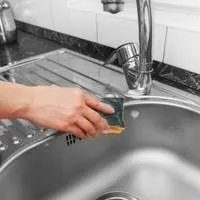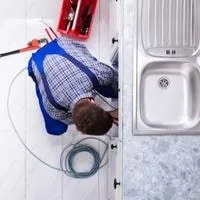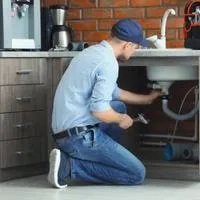Why is there no hot water in my kitchen sink. It’s not common to have a hot water issue in the kitchen sink. So, if you are facing the issue of no hot water in your kitchen sink, you can fix the issue by investigating the root cause of the issue.
Different reasons need to be checked to hunt the issue, and it will require mending to get rid of it. Having no hot water is tension creating issue but tackling it is not very tough.
So, in the following article, we will help you inspect the relevant factors and assist you with authentic steps to take to put back the hot water in your kitchen sink. Follow the guideline below.
A Guide Why is there no hot water in my kitchen sink
If you do not have hot water in your kitchen sink, it might happen due to a faulty faucet, clogging issue, and problematic water heater that can stop you from accessing the hot water.
You will find the reasons and the solutions to getting hot water, but before starting the inspection, it would help if you check the valves are open. If it’s open, then there might be clogging issues.
So, let’s start troubleshooting your kitchen sink with no hot water issue without wasting any time.
Issue #1. Clogging Issues
If your kitchen sink has no hot water, it also indicates an issue in the middle of the kitchen sink and the water heater. If the pipes are damaged, the valves are faulty, or the deposit buildup issues can influence the hot water issue.
Firstly ensure that the valves are not closed.
Seconds inspect the water pressure to see whether there is any reduction in the pressure or not. If there is, you need to know if any leakage issues are lessening the water pressure.
If there is no water flow in the faucet, you may check the other facet of the home to see whether the issue is the faucet or your water heater is the culprit.
If other faucets have water, the kitchen sink faucet is faulty, or the pipe is clogged. If all other faucets are creating the issue, then you may inspect the heater to find the issue.
Issue#2. Issue Of Rust & Corrosion
Before going in-depth into the troubleshooting procedure, we suggest inspecting your water heater. If your water heater is older, then it can get wear and tear because of rust and corrosion.
If you suspect the water is not hot enough or takes longer to warm up the water, the situation indicates an issue. To inspect the issue, flick off the heater’s circuit, and then you need to shut the faucet off. Run the water from the heater valve.
Take a torch and thoroughly inspect the heater water heater tank to see whether there are rust and corrosion signs. While examining the rust, inspecting the valve/hose would be helpful.
If the valve/hose is the culprit, you can repair it using a wrench or pair of pliers. But if leakage damage occurs to your faucet because of rust and corrosion, you can only eliminate the issue by installing the whole assembly.
It might be possible that your water heater is experiencing a leakage issue from the base. Bottom leakage requires a pro to handle the situation. Ensure that the pipe connection of the hot water line is secured and there is no dripping from the gasket or inlet valve.
Issue#3. Faulty Heating Element
If your kitchen sink doesn’t have hot water, it can happen due to a faulty heating element. To inspect the heating element, you need to inspect the heating element by accessing it.
Before approaching the heating element, ensure that you have turned off the power supply of your water heater. After that, locate the heating element of your water heater and detach it.
It would help if you stared at the heating element to check whether there is any burning sign on it. It might be possible that it will get expired by having rust on it.
Rust and corrosion also disable the element to make water hot. If you find any damage, you are required to install a new component. Go online to have a new one similar to the model of your water heater and install it.
Issue#4. Problematic Cartridge
Usually, the single-handle faucet contains a cartridge located inner side of the faucet. It is responsible for hot and cold water temperatures using a single handle.
The cartridge generally inducts into the faucet by the manufacturers. The cartridge monitors the quantity of the hot and cold water stream according to the movement of the handle you made.
With time the water deposit starts building up in the faucet and creates an obstacle in water flow. Consequently, your kitchen sink runs out of hot water.
So most of the faucet uses the following instructions to inspect the issue. So firstly, the procedure requires flicking off the water valve. Then it would help if you unfastened the faucet using an Allen wrench or a screwdriver.
You can take help from the needle nose pliers to remove the cartridge from the faucet. You need to clean the component if there is a deposit buildup.
It would be better to dip the cartridge into the white vinegar for the cleaning task. If you have an old brush, use it to remove the extra clogging material. If it’s not cleaned correctly, then place it in the solution of vinegar and water.
Steps To Follow:
Before starting the inspection, you need to shut off the water valve. The valve is usually located under the sink. Access under the sink and rotate the valve until it stops flowing water.
After turning off the water supply, you must inspect the faucet, whether it requires an Allen wrench or a screwdriver. After removing the mounting screw, you need to keep it in a safe spot so you can use it later.
Then it would help if you unfastened the cartridge using a standard or needle nose plier. After taking it off, you need to inspect whether it has buildup.
You need to clean it using white vinegar and an old brush if it has. It would help to soak it in white vinegar and water. Use equal quantities and dip it into the solution for 12 hours or the whole night.
After cleaning it, you need to place it in the faucet and attach it on its spot using the same tools you used for detaching. Open the water valve and see whether it starts working or not.
Issue#5. Clogged Water Line
If you check the faucet cartridge and install it after cleaning, but the hot water issue persists, you need to check the water line.
If the water deposits block the cartridge, it can also block the water line. So, the last thing you need to check is a clogged water line.
Shut the water valve off and lose the cartridge of the faucet. Open the hot water supply. If it flows no water from the faucet, it indicates the water line is clogged.
You can eliminate clogging, so firstly, turn off the hot water supply. Unfasten the hot water line. It’s not hard to disconnect it from the faucet.
Place your finger to close the spigot. Run the cold water by turning it on and letting it flow in the hot water line. Turn on and off the cold water to eliminate the blockage with the cold water pressure. When it starts flowing water install the water line back in place.
If the issue persists, you need to call a plumber, as you have tried all the possible methods to fix the hot water issue in your kitchen sink.
Related Guides


